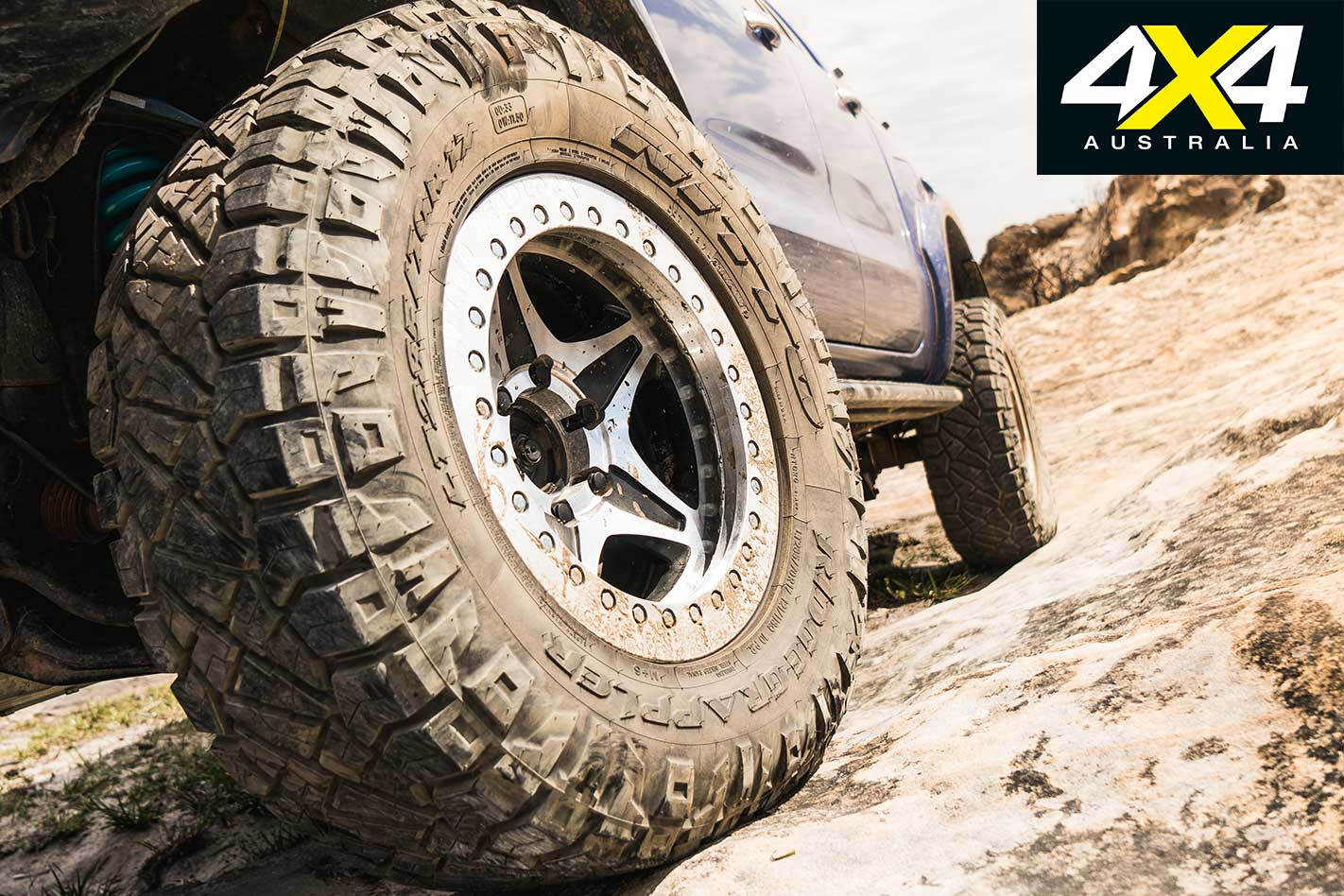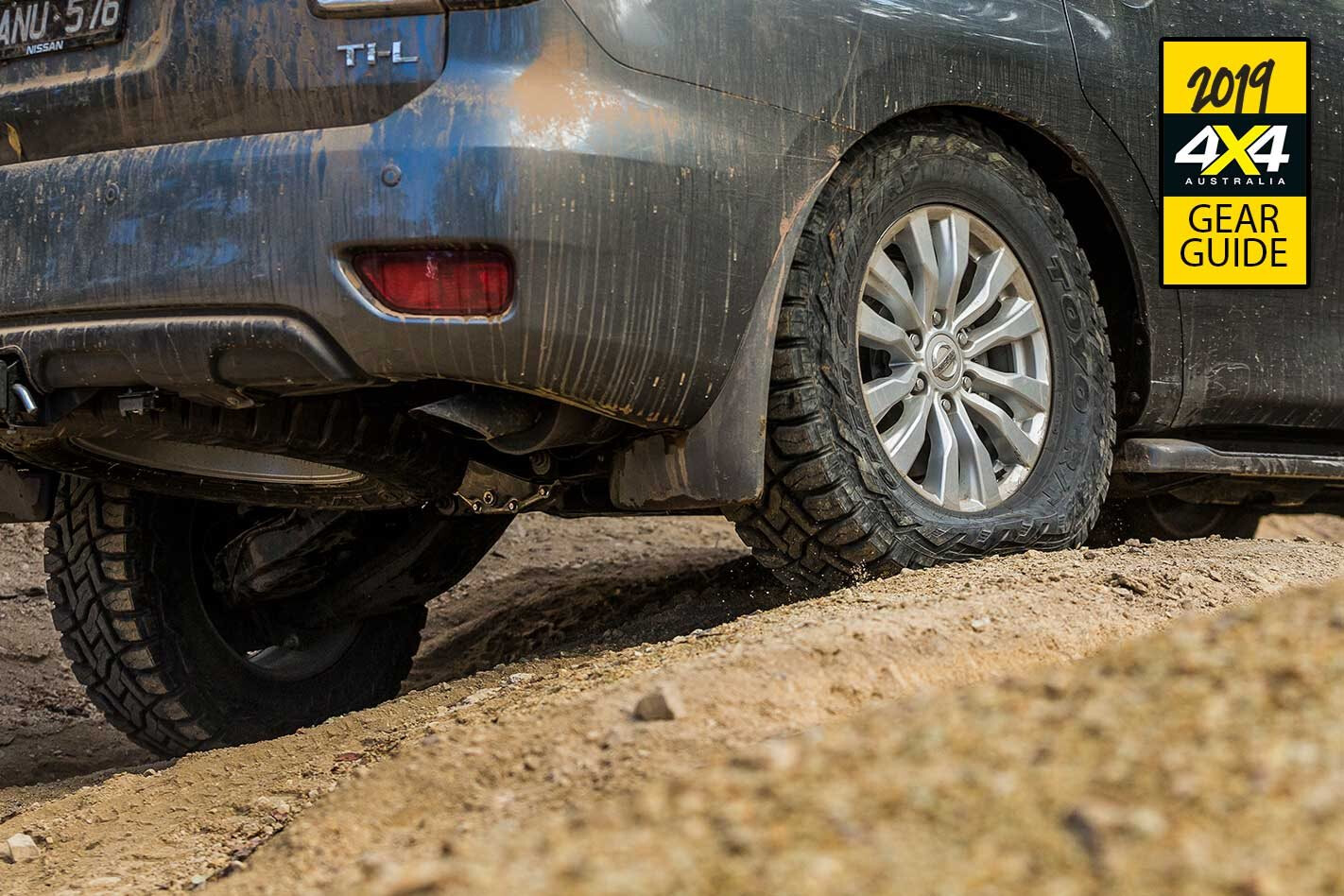Choosing the right tyres is one of the most important decisions a four-wheel driver can make, especially when setting up a rig for touring.
Construction
Many new 4x4s are fitted with Passenger Car (P) construction tyres. These may look robust, but they have a light carcass with thin sidewalls and tread area. A light construction helps tyres dissipate heat, aiding tyre life, and gives them flexible sidewalls, aiding ride comfort. Light weight also minimises rotational forces, resulting in improved vehicle acceleration, braking and fuel economy.

These on-road benefits work against Passenger Car tyres off-road where the light carcass is susceptible to damage from sharp objects. If you’re going to be doing a lot of dirt- or off-road miles, upgrade to Light Truck (LT) construction tyres, as their heavier construction provides better puncture resistance.
The construction of each tyre type is clearly marked on the sidewall. Passenger Car tyres will be marked with ‘P’ or have no marking at all prior to the size listing (e.g. P265/65R17 or 265/65R17) while Light Truck tyres will be marked with ‘LT’ prior to the size (e.g. LT265/65R17).
In the examples listed, ‘265’ refers to tread width in millimetres; ‘65’ refers to aspect ratio (the depth of the sidewall as a percentage of tread width); ‘R’ refers to radial construction; and ‘17’ refers to wheel diameter (in inches).
Tread Pattern

There are many different tread patterns on the market, but they can generally be split into three categories: highway terrain (H/T), all terrain (A/T) and mud terrain (M/T). Choosing the right one to suit your needs will depend on the driving conditions you most likely expect to encounter.
If almost all of your driving will be on sealed roads, H/T tyres will provide the best grip in both dry and wet conditions. They also produce less noise than tyres with a more aggressive tread pattern, and the potential for less rolling resistance can result in better fuel economy and longer tyre life.
On the downside, they will not perform as well off-road; their closed-in tread pattern can struggle to gain purchase and clear away dirt and mud.

At the other end of the scale M/T tyres have wide-open tread blocks that can more readily clear away mud and provide bite in slippery off-road conditions, but they can be noisy on the road and wear faster than H/T or A/T tyres.
A/T tyres are a compromise between highway tyres and muddies and are ideally suited to those who have to travel long distances on the blacktop, as well as a fair bit of off-road driving on the agenda.
Tyre sizes

The more common a tyre size the easier it will be to find a replacement in regional areas if you damage one beyond repair. The most common size today is probably the 265/65R17 as fitted to many 4×4 utes, but there are still plenty of 15-inch, 16-inch and even 18-inch L/T tyres around.
If your new vehicle comes standard with flash-looking 20-inch rims, ask the dealer if there’s an alternative size available. Some manufacturers offer a smaller rim diameter as a no-cost option.
Legalities

When it comes to fitting bigger tyres to your 4×4 there are some rules you need to abide by. In most of Australia it’s now accepted that you can raise the height of a vehicle by a total of 75mm – 50mm through suspension and 25mm through a tyre-size increase.
However, before you go up a size, ensure you check with your state governing body and your insurance company. Be aware that larger diameter, heavier tyres affect vehicle gearing and performance.
You can fit a tyre with a lower speed rating than listed on the vehicle’s tyre placard, so long as the driver does not exceed that speed on the road. The lowest speed rating for off-road tyres in Australia is ‘N’ (140km/h).
You must never fit a tyre to your vehicle with a lower load rating than that listed on your vehicle’s tyre placard. Both a tyre’s speed rating and its load index will be marked on the sidewall.





